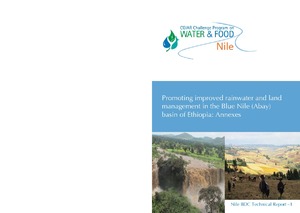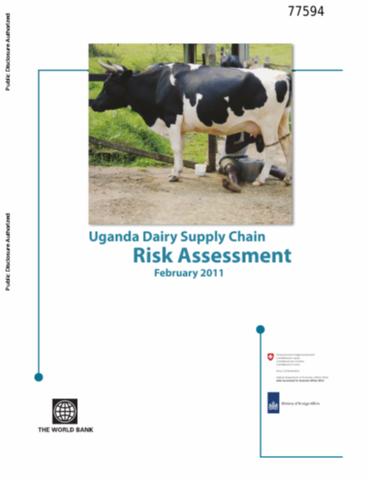Promoting improved rainwater and land management in the Blue Nile (Abay) basin of Ethiopia
This paper is an attempt to draw together and synthesise as much of the existing documentation as is possible within a limited time period, analyse it systematically, and draw out the main conclusions, lessons learned, and gaps in knowledge.
ICARDA Annual Report 2010
Global food production has increased by 20% in the past decade – but food insecurity and poverty remain widespread , while the natural resource base continues to decline.
Dialogue on Ethiopian Agricultural Development: Report of a conference, Addis Ababa, Ethiopia, 12 November 2009
The dialogue on Ethiopian Agricultural Development was organized by the Ministry of
Agriculture and Rural Development (MoARD) of the Federal Democratic Republic of Ethiopia
and the International Livestock Research Institute (ILRI) to honour Professor Gebisa Ejeta,
winner of the 2009 World Food Prize. The dialogue was held on 12 November 2009 at the
Uganda Dairy Supply Chain Risk Assessment
Cattle are one of the main instruments for economic (e.g., milk, meat, and cattle sale) and social (e.g., marriage, death, dispute settlement, and gift giving) exchange in Uganda. They serve as the main source of livelihood for a large majority of rural Ugandans, especially in the cattle corridor.
Implicit prices of indigenous cattle traits in central Ethiopia: Application of revealed and stated preference approaches
The diversity of animal genetic resources has a quasi-public good nature that makes market prices inadequate indicator of its economic worth. Applying the characteristics theory of value, this research estimated the relative economic worth of the attributes of cattle genetic resources in central Ethiopia.
Mitigation of climate change in livestock systems in Kenya
Breeding strategy to improve Ethiopian Boran cattle for meat and milk production
In Ethiopia, genetic improvement of the indigenous cattle for dairy production, focusing on crossbreeding, has been practised for the last five decades, albeit with little success.
Selection as an improvement tool has been given less emphasis and as such there have
been no systematic and organized selection schemes for cattle genetic improvement in
Measuring the value of land
The economic dimension of desertification, land degradation and drought (DLDD) is increasingly gaining importance.
Development and application of decision support tools to conserve and sustainably use genetic diversity in indigenous livestock and wild relatives baseline survey: PRA tools
Examples of the diversity of rights holders and rights to land and natural resources in West Africa
Looks at nomadic pastoralists’ rights to resources, rights to land and resources in Winye country in Burkina Faso, and land rights in forested areas and plantation economies.












